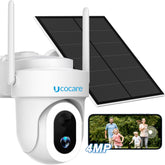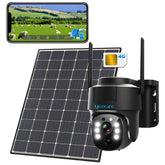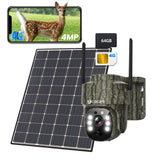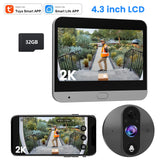What is a PTZ Camera? How to Purchase a PTZ Camera?
In the dynamic landscape of surveillance technology, Pan-Tilt-Zoom (PTZ) cameras stand out as versatile tools, offering unparalleled flexibility in monitoring and capturing visuals. This blog aims to demystify the realm of PTZ cameras, providing insights into their functionality and offering a comprehensive guide on how to make an informed choice when making a purchase.
What is a PTZ Camera?
PTZ cameras, short for Pan-Tilt-Zoom cameras, represent a sophisticated category of surveillance equipment designed for dynamic and comprehensive monitoring. The core features that set PTZ cameras apart include:
1. Pan Functionality:
Pan refers to the horizontal rotation capability of the camera, allowing it to cover a wide field of view.
PTZ cameras can pan continuously or be programmed for specific patterns of movement. It’s like turning your head from side to side to see more of your surroundings.
2. Tilt Capability:
Tilt enables the camera to move vertically, providing coverage from floor to ceiling.
This feature is crucial for monitoring multi-level environments and ensuring a complete surveillance picture. This is similar to nodding your head, allowing the camera to cover a larger vertical area.
3. Zooming In:
Zoom functionality allows for magnification of distant objects.
Optical zoom, in particular, maintains image quality during magnification, ensuring clear and detailed visuals. This is critical for identifying details like faces, license plates, or specific actions in a scene.

How to Purchase a PTZ Camera?
Choosing the right PTZ camera requires considering a variety of factors to meet your specific surveillance needs. Here's a comprehensive guide to aid in the selection process:
1. Resolution and Image Quality
Higher resolution ensures clearer images. Consider cameras with at least 1080p resolution for optimal clarity.
Evaluate low-light performance and WDR (Wide Dynamic Range) capabilities for diverse lighting conditions.
2. Zoom Capabilities
Assess the zoom range of the camera. Optical zoom is preferred for maintaining image quality.
Understand the difference between optical and digital zoom, with optical providing superior results.
3. Pan and Tilt Speed
Faster pan and tilt speeds are crucial for tracking fast-moving objects.
Consider the camera's agility in responding to commands for real-time monitoring.
4. Weather Resistance
For outdoor applications, choose PTZ cameras with robust weather-resistant features.
In harsh environments, consider cameras with added protection against dust, humidity, and extreme temperatures.
5. Network Connectivity and Integration
If you require remote access, choose a camera that supports network connectivity and can be integrated into your existing security system.
6. Smart Features and Analytics
Evaluate smart tracking capabilities for automated object tracking.
Look for PTZ cameras with analytics features such as motion detection, facial recognition, and intrusion detection.
7. Remote Accessibility
Choose cameras that offer remote access capabilities for convenient monitoring from anywhere with an internet connection.
8. Budget Considerations
Establish a budget based on the features required and the intended application.
Consider long-term costs, including maintenance and potential upgrades.
By carefully considering these factors, you can choose a PTZ security camera that not only suits your surveillance requirements, but also offers the best balance of features, quality, and value.
Conclusion
In the fast-paced world of surveillance technology, PTZ cameras stand as powerful tools, offering a myriad of functionalities to cater to diverse monitoring needs. Selecting the right PTZ camera involves a thoughtful consideration of factors such as resolution, zoom capabilities, weather resistance, integration capabilities, and budget constraints. By understanding the nuances of PTZ camera features and applications, users can make informed decisions, ensuring that their surveillance needs are met with efficiency and precision.











